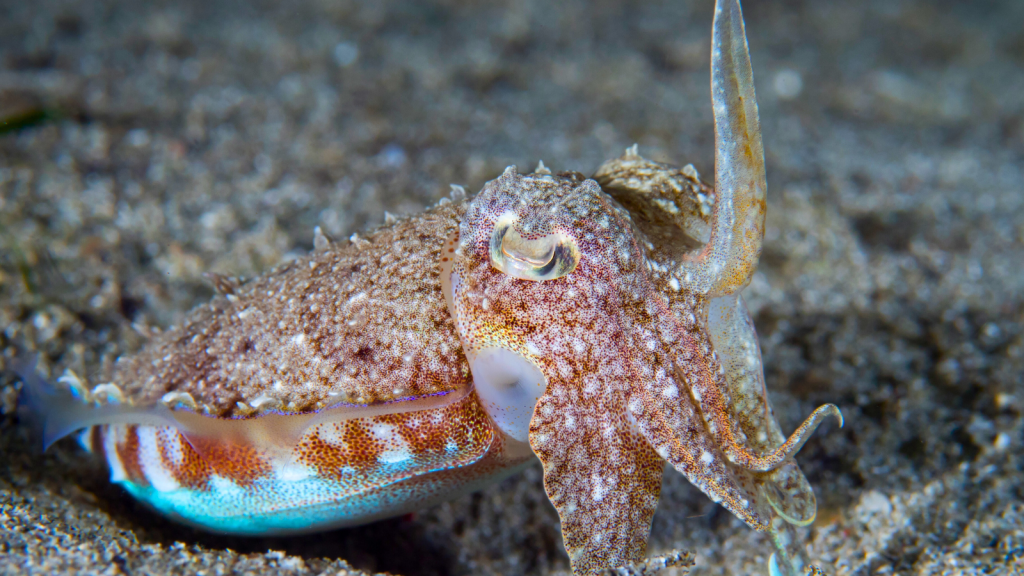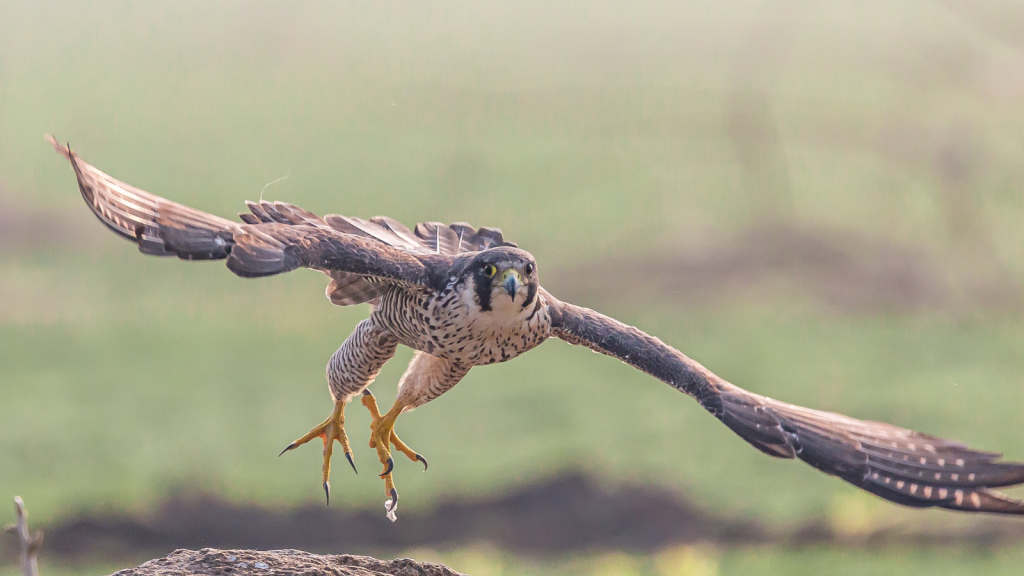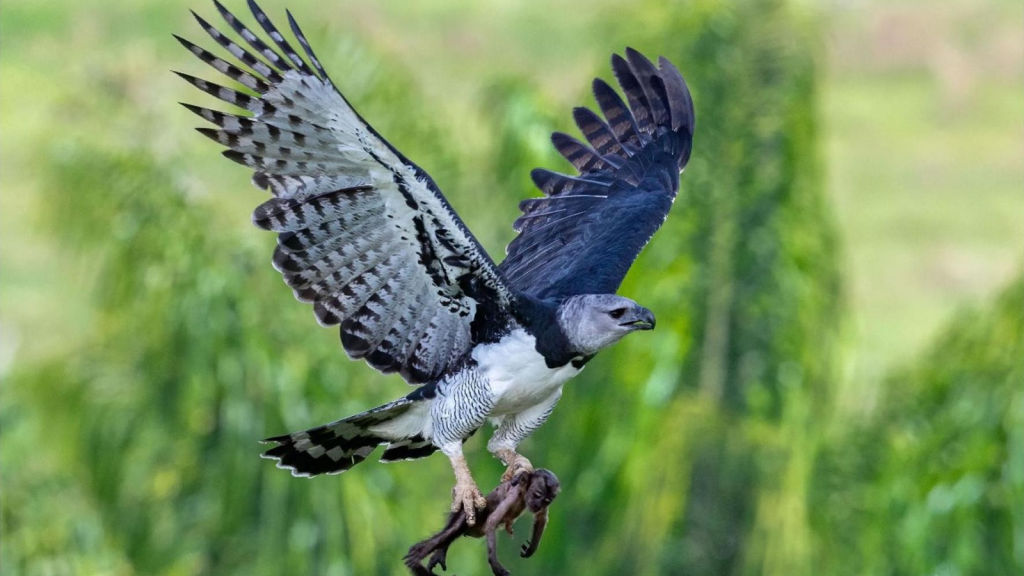The natural world is a constant battleground of survival, where predators and prey engage in a never-ending game of cat and mouse. As prey animals develop new defences, predators must adapt to stay one step ahead. This evolutionary arms race has led to some truly remarkable adaptations in predatory species. From enhanced sensory abilities to clever hunting strategies, these changes showcase the incredible adaptability of nature’s hunters. Here are 18 fascinating ways predators are evolving to outsmart their prey.
Sharper Night Vision

Some predators are developing better night vision to hunt in darkness. Cats, for example, have eyes that are becoming more sensitive to low light. This helps them spot prey that tries to hide under the cover of night. The tapetum lucidum, a reflective layer behind the retina, is becoming more efficient in reflecting light, further enhancing their night vision capabilities.
Camouflage Mastery

Predators like cuttlefish are becoming experts at changing their skin colour and texture. They can now mimic their surroundings so well that prey animals often don’t see them until it’s too late. Recent studies have shown that cuttlefish can even mimic the texture of coral and rocks, adding another layer to their impressive disguise.
Silent Flight

Owls are evolving even quieter flight feathers. The edges of their wings are becoming more frayed, which breaks up air turbulence and allows them to swoop down on unsuspecting mice without making a sound. This adaptation is particularly pronounced in the barn owl, whose flight is now virtually silent even to the most sensitive instruments.
Faster Reflexes

Many predators are developing quicker reflexes to catch swift prey. Peregrine falcons, for instance, are becoming more agile in the air, allowing them to make split-second adjustments during high-speed dives. Their visual processing speed is also increasing, enabling them to track fast-moving prey with unprecedented accuracy.
Improved Scent Detection

Wolves and other canines are evolving more sensitive noses. This enhanced smell helps them track prey over long distances and even detect animals hiding underground. Some wolf populations have developed the ability to detect prey scents from up to 1.75 miles away in favourable conditions.
Venomous Adaptations

Some snakes are evolving more potent venom. This allows them to subdue prey more quickly and efficiently, reducing the risk of injury during hunts. Certain species, like the king cobra, are developing venom that targets specific prey animals, making their hunts even more effective.
Cooperative Hunting

Certain predators, like lions, are becoming more socially intelligent. This allows them to work together in groups to take down larger prey that would be impossible for a single hunter. Lions are now observed using more complex strategies, such as setting up ambushes with different roles for each pride member.
Mimicry Techniques

Some predators are evolving to look like harmless animals. The zone-tailed hawk, for example, is starting to resemble turkey vultures, allowing it to approach prey without raising alarm. This mimicry extends to flight patterns, with the hawk adopting the vulture’s characteristic wobbling glide.
Electrical Sensing

Sharks are developing more sensitive electroreceptors. This helps them detect the tiny electrical signals given off by prey fish, even when they’re hidden in sand or murky water. Some shark species can now detect electrical impulses as weak as five billionths of a volt.
Tool Use

Certain birds, like New Caledonian crows, are becoming more adept at using and even making tools. This allows them to access food sources that would otherwise be out of reach. These crows have been observed crafting hooks from twigs, a skill previously thought to be unique to humans.
Echolocation Refinement

Bats are evolving more sophisticated echolocation abilities. Their high-pitched calls are becoming more precise, allowing them to detect smaller insects and navigate denser environments. Some bat species can now distinguish between different insect species based solely on their echo signatures.
Ambush Tactics

Some predators are developing better ambush strategies. Trapdoor spiders, for instance, are creating more convincing camouflaged lids for their burrows, tricking prey into coming too close. They’re also evolving to sense vibrations from further away, giving them more time to prepare for an approaching meal.
Luring Techniques

Anglerfish are evolving more convincing lures. Their bioluminescent ‘fishing rods’ are becoming more attractive to prey, drawing them closer to the anglerfish’s waiting jaws. Some deep-sea species have developed lures that mimic specific prey animals, making their baits even more irresistible.
Speed Enhancements

Cheetahs are becoming even faster runners. Their bodies are streamlining further, allowing them to reach higher speeds when chasing down swift prey like gazelles. Recent studies suggest that cheetahs are also developing more efficient respiratory systems, enabling them to maintain top speeds for longer periods.
Venom Resistance

Some predators, like mongooses, are evolving resistance to the venom of their prey. This allows them to hunt venomous snakes without fear of being fatally bitten. Mongooses have developed specialized acetylcholine receptors that prevent snake venom from binding, rendering it ineffective.
Web Engineering

Spiders are developing more complex web designs. Some orb-weavers are creating intricate patterns that are nearly invisible to insects, increasing their chances of a successful catch. Certain species have even evolved to incorporate UV-reflective strands into their webs, which attract insects but are invisible to birds, reducing web damage.
Colour Vision Improvements

Certain predatory birds are evolving better colour vision. This helps them spot camouflaged prey that would be invisible to other animals. Some raptors, like eagles, are developing a fourth type of cone cell in their eyes, allowing them to see a broader spectrum of colours than most other vertebrates.
Social Learning

Many predators are becoming better at learning from each other. Young orcas, for example, are getting better at picking up hunting techniques from their elders, allowing them to tackle a wider range of prey. Recent observations have shown orca pods developing unique hunting strategies tailored to their specific habitats and available prey.
15 Facts About the Honey Badger, the Fiercest Animal in Africa

The honey badger, a small but mighty creature, roams the African wilderness with a fearless attitude that’s earned it quite a reputation. These tenacious animals have captured the imagination of wildlife enthusiasts and casual observers alike. Despite their name, honey badgers aren’t closely related to European badgers and are more akin to weasels and otters. Their tough-as-nails approach to life and remarkable abilities have made them the stuff of legend. Let’s explore some fascinating facts about these extraordinary creatures that prove why they’re considered Africa’s fiercest animals.
Read More: 15 Facts About the Honey Badger, the Fiercest Animal in Africa
Becky is a fervent wildlife enthusiast and pet care expert with a diploma in canine nutrition. Her love for animals stretches beyond the domestic, embracing the wild tapestry of global fauna. With over a decade of experience in animal welfare, Becky lends her expertise to OutlandishOwl through insightful articles, captivating wildlife information, and invaluable guidance on pet nutrition. Her work embodies a deep commitment to understanding the intricate lives of animals and a passion for educating others on sustaining natural habitats. Becky's hands-on conservation efforts and her knack for translating complex dietary science into practical pet feeding tips make her an indispensable voice for creatures great and small.




